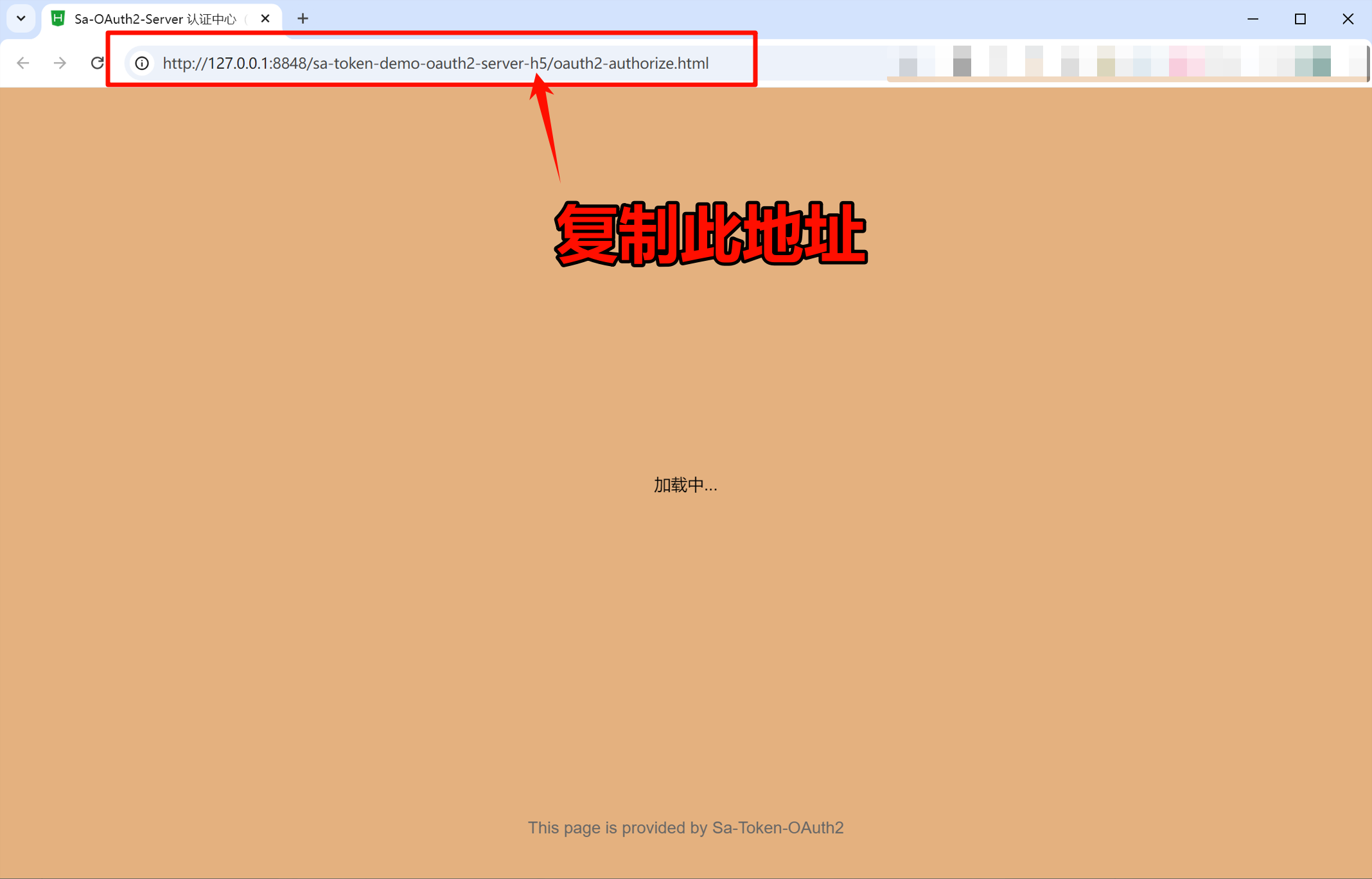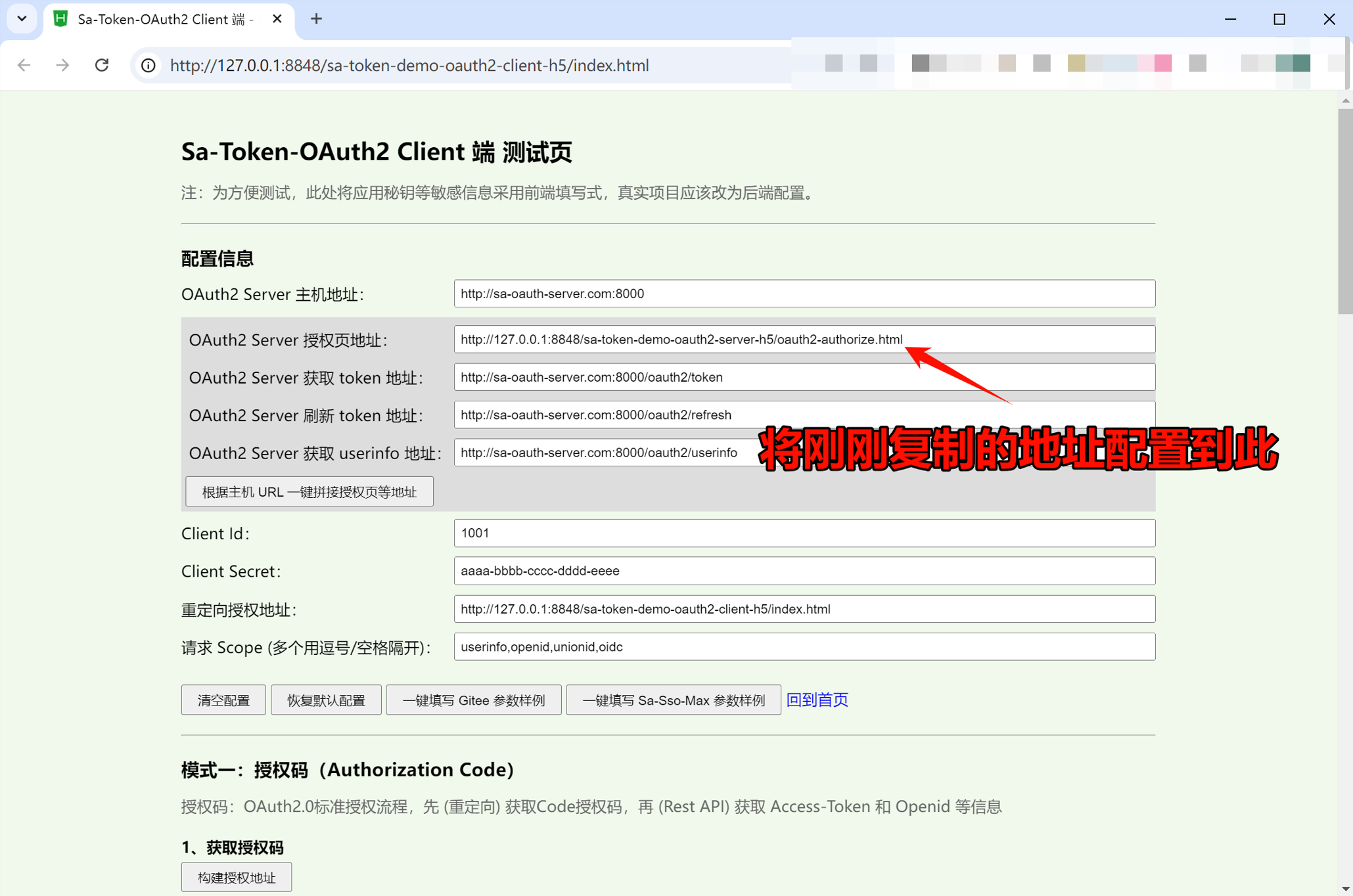mirror of
https://gitee.com/dromara/sa-token.git
synced 2025-04-05 17:37:53 +08:00
5.4 KiB
5.4 KiB
OAuth2-Server 端前后台分离
1、设计分析
要使 OAuth2-Server 端做到前后台分离,则需要对接口进行一部分改造:
- 改造前的接口列表:
http:{后端主机}/oauth2/authorizehttp:{后端主机}/oauth2/tokenhttp:{后端主机}/oauth2/refresh- 更多...
- 改造后的接口列表:
http:{前端主机}/oauth2/authorizehttp:{后端主机}/oauth2/tokenhttp:{后端主机}/oauth2/refresh- 更多...
也就是,只需要重点改造 /oauth2/authorize 一个接口即可,/oauth2/authorize 接口主要做了三件事:
- 判断用户在 oauth2-server 端是否登录,未登录会进入 [登录页面],已登录则进入下一步。
- 判断应用请求的 scope 是否需要用户手动确认授权,需要会进入 [确认授权页面],不需要则进入下一步。
- 重定向至
redirect_uri指定的 url 地址,并携带 code 授权码参数。
我们只需要把上述逻辑从 oauth2-server 的后端搬到 oauth2-server 的前端即可。
2、OAuth2-Server 后端添加接口
首先在 oauth2-server 的后端添加一个接口,用于获取最终授权重定向地址:
/**
* Sa-Token OAuth2 Server端 控制器 (前后端分离情形下所需要的接口)
*/
@RestController
public class SaOAuth2ServerH5Controller {
/**
* 获取最终授权重定向地址,形如:http://xxx.com/xxx?code=xxxxx
*
* <p> 情况1:客户端未登录,返回 code=401,提示用户登录 <p/>
* <p> 情况2:请求的 scope 需要客户端手动确认授权,返回 code=411,提示用户手动确认 <p/>
* <p> 情况3:已登录且请求的 scope 已确认授权,返回 code=200,redirect_uri=最终重定向 url 地址(携带code码参数) <p/>
*
* @return /
*/
@PostMapping("/oauth2/getRedirectUri")
public Object getRedirectUri() {
// 获取变量
SaRequest req = SaHolder.getRequest();
SaOAuth2ServerConfig cfg = SaOAuth2Manager.getServerConfig();
SaOAuth2DataGenerate dataGenerate = SaOAuth2Manager.getDataGenerate();
SaOAuth2Template oauth2Template = SaOAuth2Manager.getTemplate();
String responseType = req.getParamNotNull(SaOAuth2Consts.Param.response_type);
// 1、先判断是否开启了指定的授权模式
SaOAuth2ServerProcessor.instance.checkAuthorizeResponseType(responseType, req, cfg);
// 2、如果尚未登录, 则先去登录
long loginId = SaOAuth2Manager.getStpLogic().getLoginId(0L);
if(loginId == 0L) {
return SaResult.get(401, "need login", null);
}
// 3、构建请求 Model
RequestAuthModel ra = SaOAuth2Manager.getDataResolver().readRequestAuthModel(req, loginId);
// 4、校验:重定向域名是否合法
oauth2Template.checkRedirectUri(ra.clientId, ra.redirectUri);
// 5、校验:此次申请的Scope,该Client是否已经签约
oauth2Template.checkContractScope(ra.clientId, ra.scopes);
// 6、判断:如果此次申请的Scope,该用户尚未授权,则转到授权页面
boolean isNeedCarefulConfirm = oauth2Template.isNeedCarefulConfirm(ra.loginId, ra.clientId, ra.scopes);
if(isNeedCarefulConfirm) {
// code=411,需要用户手动确认授权
return SaResult.get(411, "need confirm", null);
}
// 7、判断授权类型,重定向到不同地址
// 如果是 授权码式,则:开始重定向授权,下放code
if(SaOAuth2Consts.ResponseType.code.equals(ra.responseType)) {
CodeModel codeModel = dataGenerate.generateCode(ra);
String redirectUri = dataGenerate.buildRedirectUri(ra.redirectUri, codeModel.code, ra.state);
return SaResult.ok().set("redirect_uri", redirectUri);
}
// 如果是 隐藏式,则:开始重定向授权,下放 token
if(SaOAuth2Consts.ResponseType.token.equals(ra.responseType)) {
AccessTokenModel at = dataGenerate.generateAccessToken(ra, false, null);
String redirectUri = dataGenerate.buildImplicitRedirectUri(ra.redirectUri, at.accessToken, ra.state);
return SaResult.ok().set("redirect_uri", redirectUri);
}
// 默认返回
throw new SaOAuth2Exception("无效 response_type: " + ra.responseType).setCode(SaOAuth2ErrorCode.CODE_30125);
}
}
3、新建前端项目
既然是前后台分离,那肯定要有一个独立的前端项目,所需代码比较冗长,不便于在文档处直接展示,大家可以参考在线仓库示例:
sa-token-demo-oauth2-server-h5/
4、运行测试
在前端 ide 中导入 demo 案例的 sa-token-demo-oauth2-server-h5 项目,然后直接预览 oauth2-authorize.html 页面,如图所示:
复制上述地址,然后将其配置到 “OAuth2前端测试页” 的 “OAuth2 Server 授权页地址” 选项中,其它选项保持默认不变:
然后根据 “OAuth2前端测试页” 的页面提示进行测试即可,此处不再赘述。

